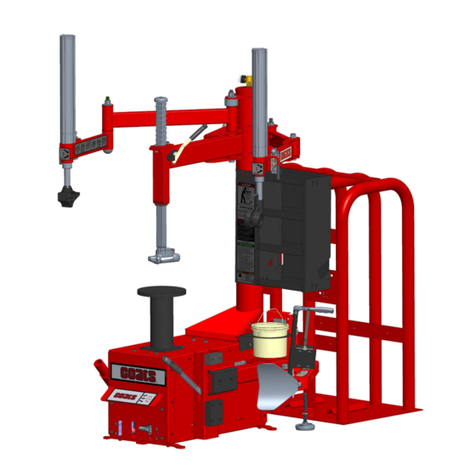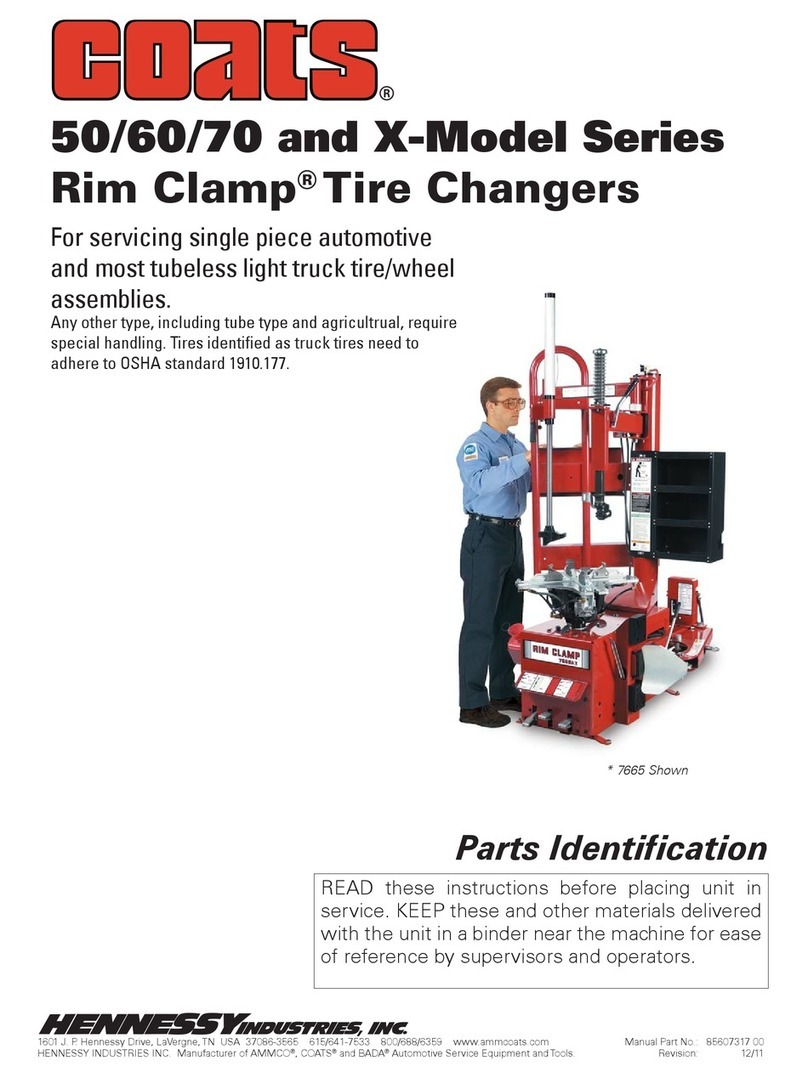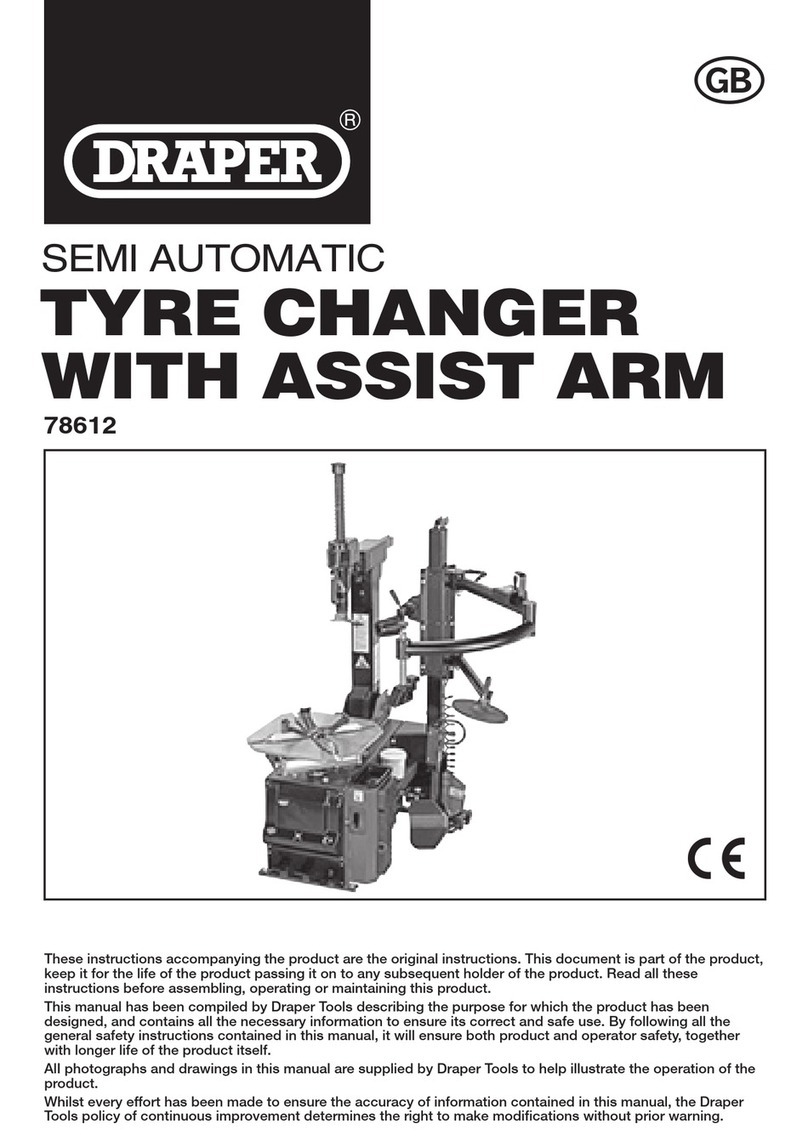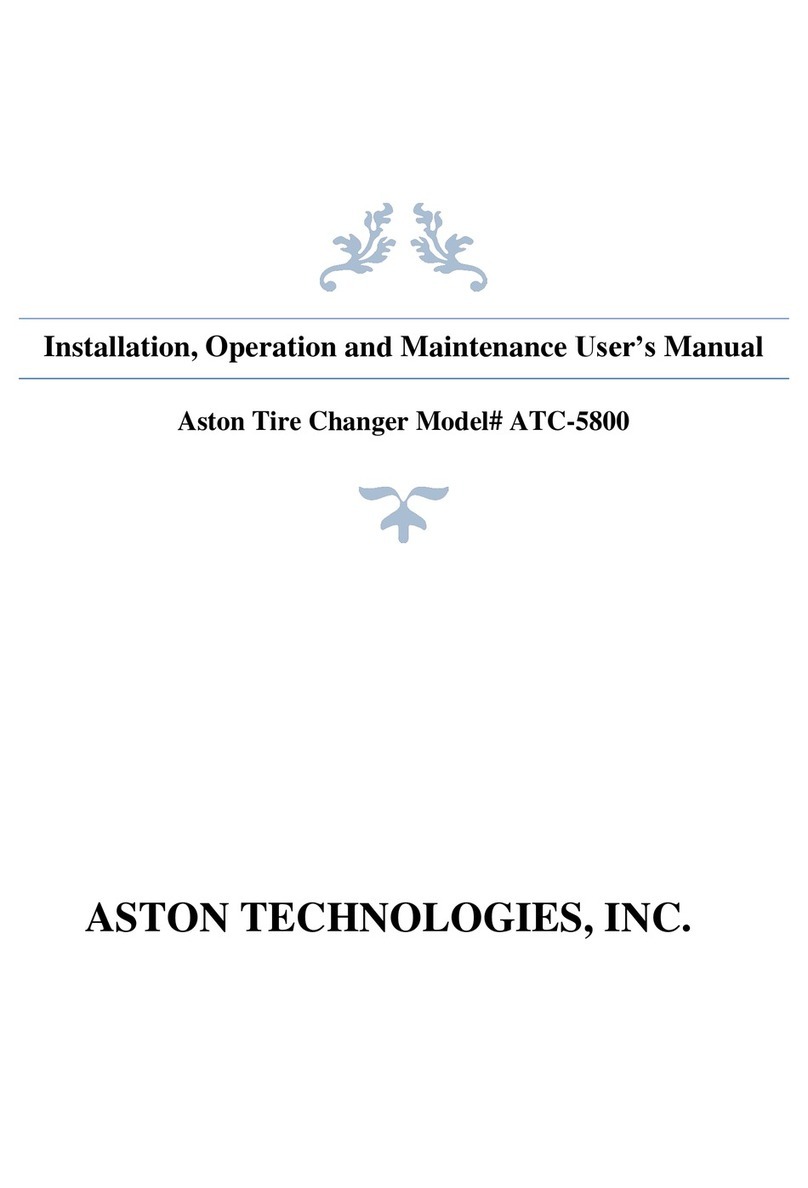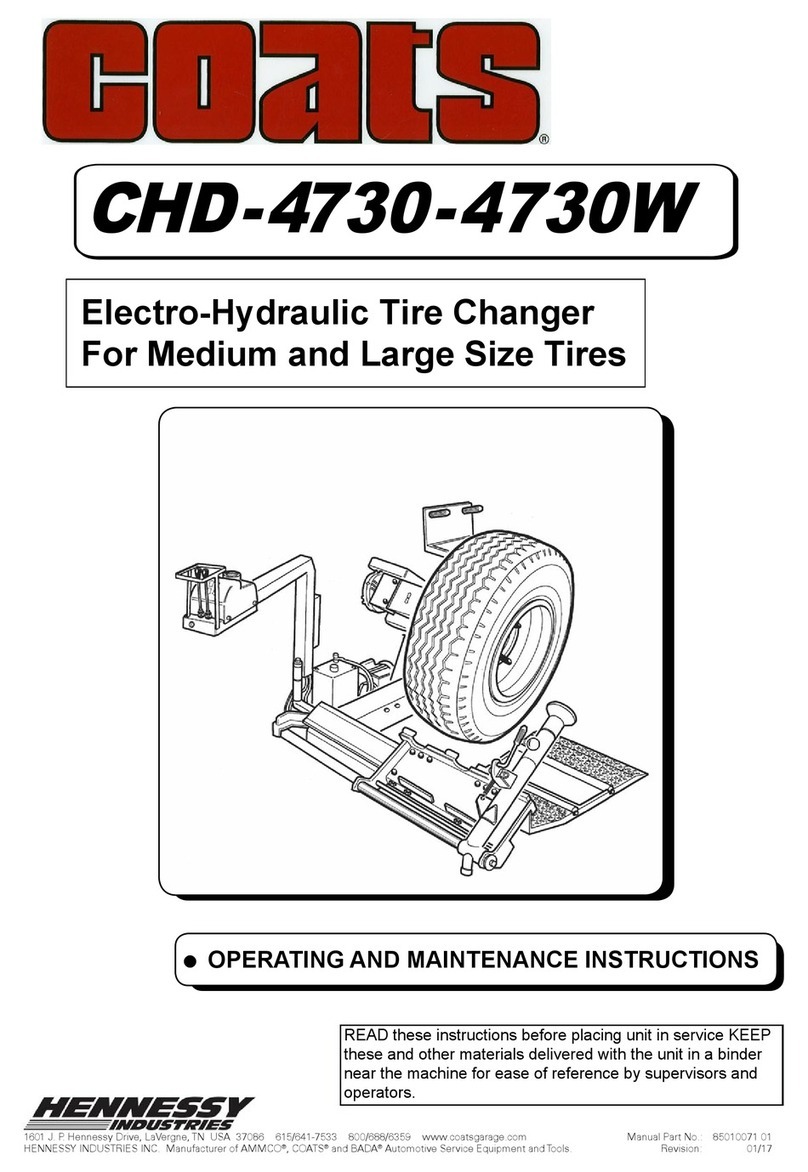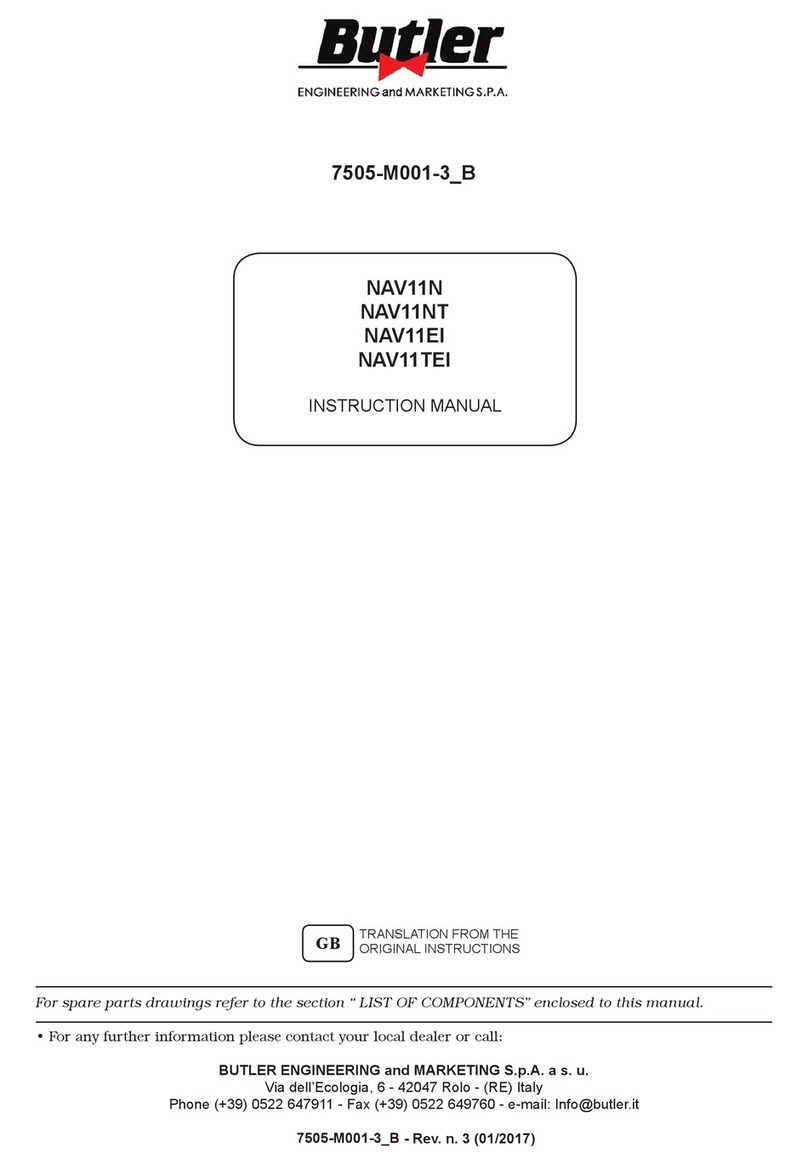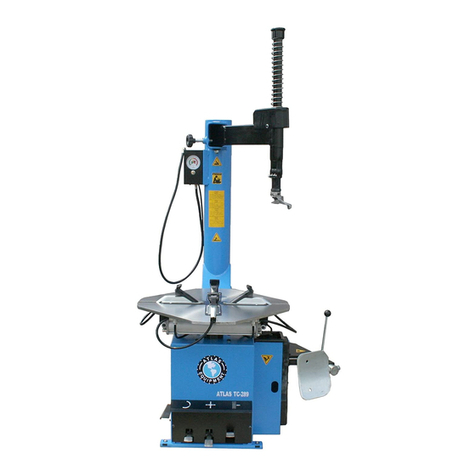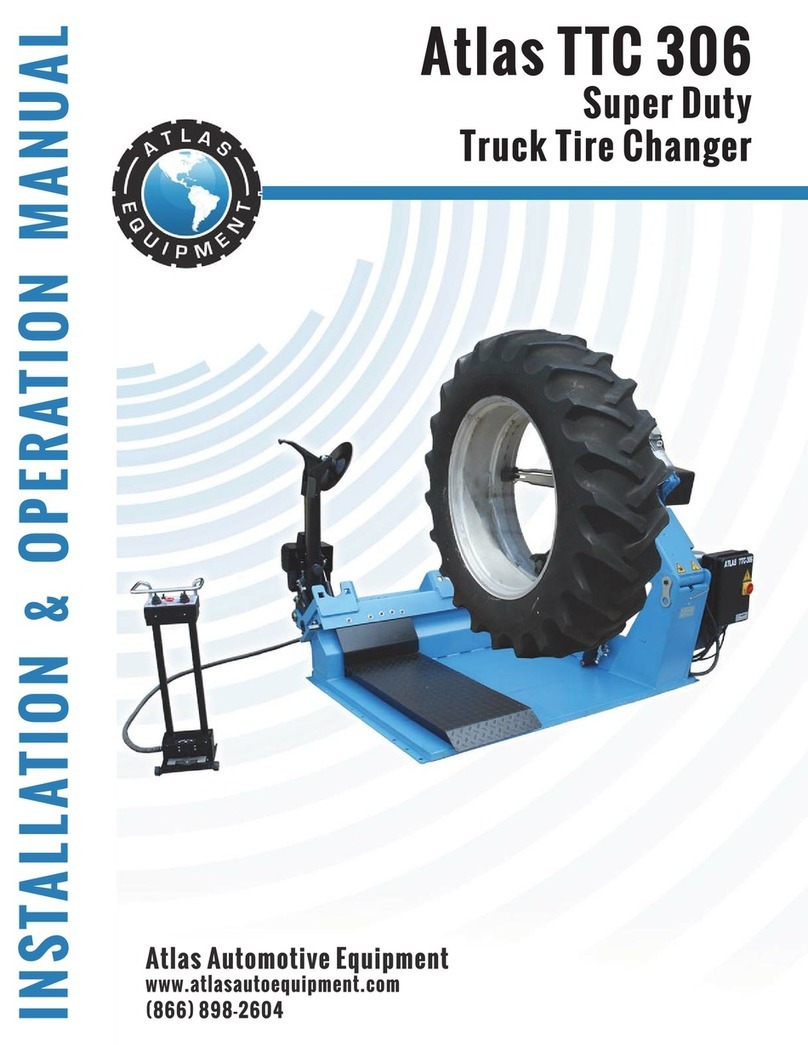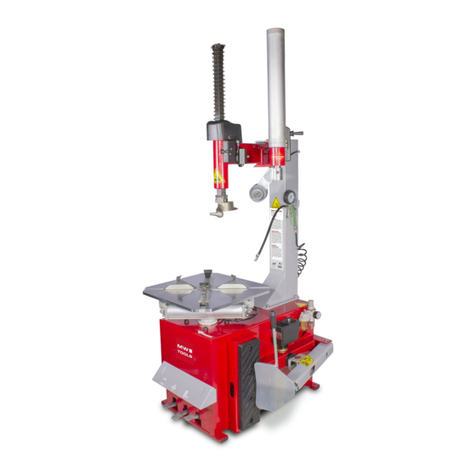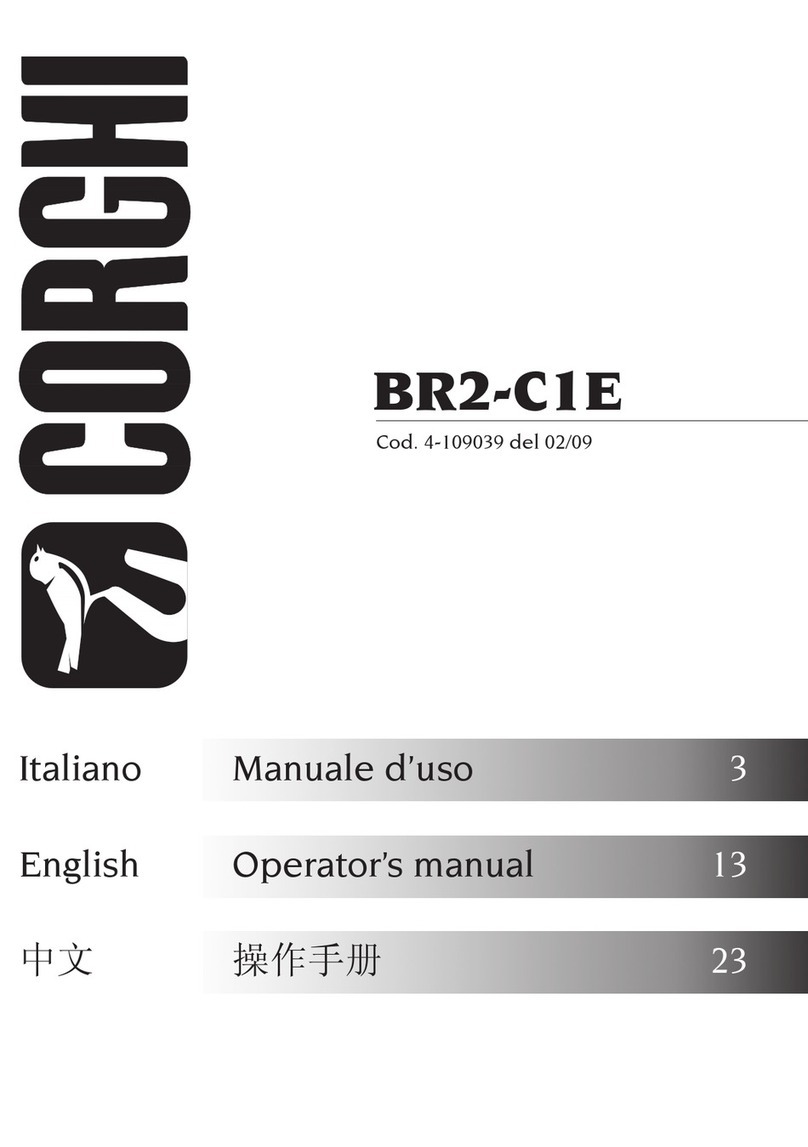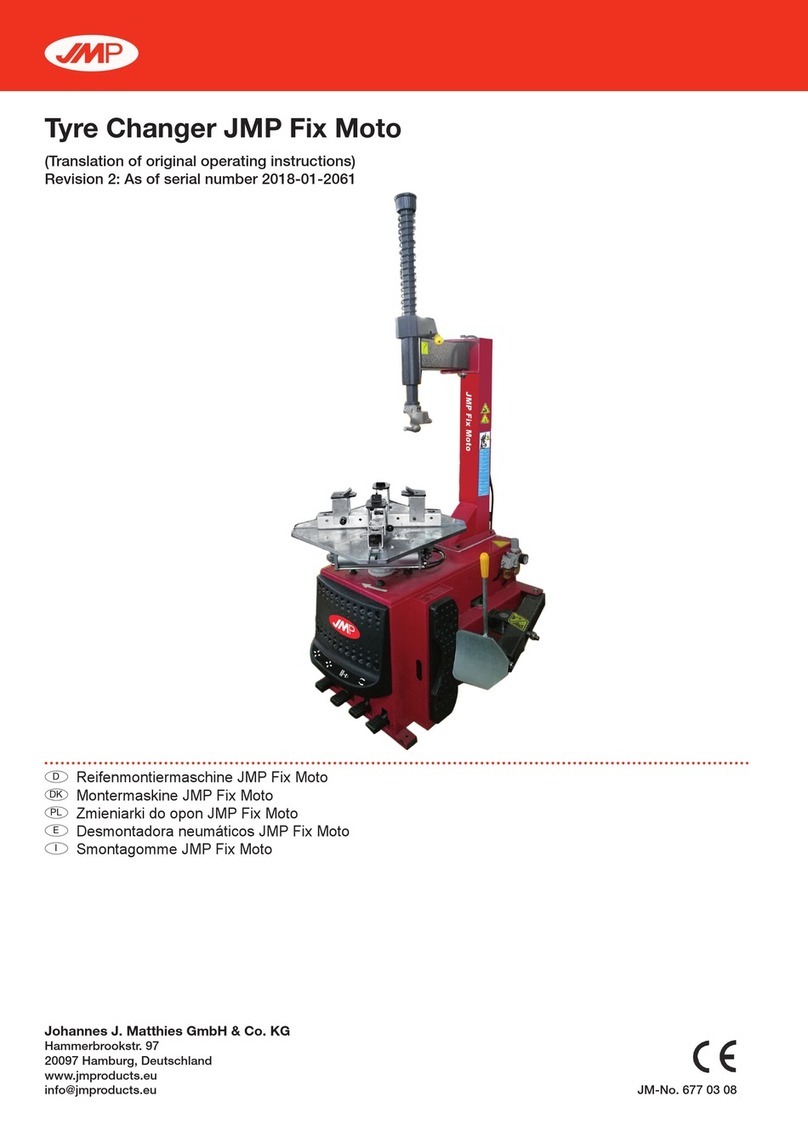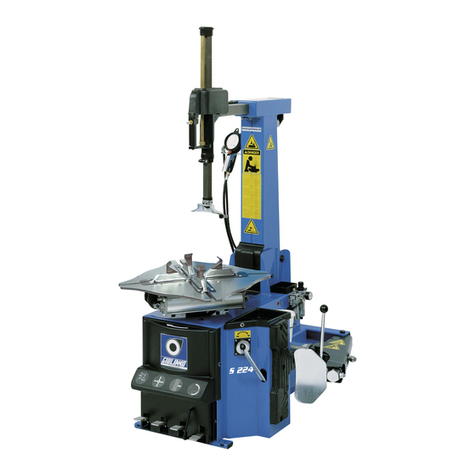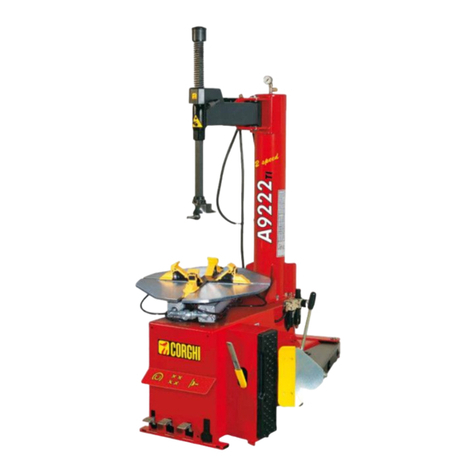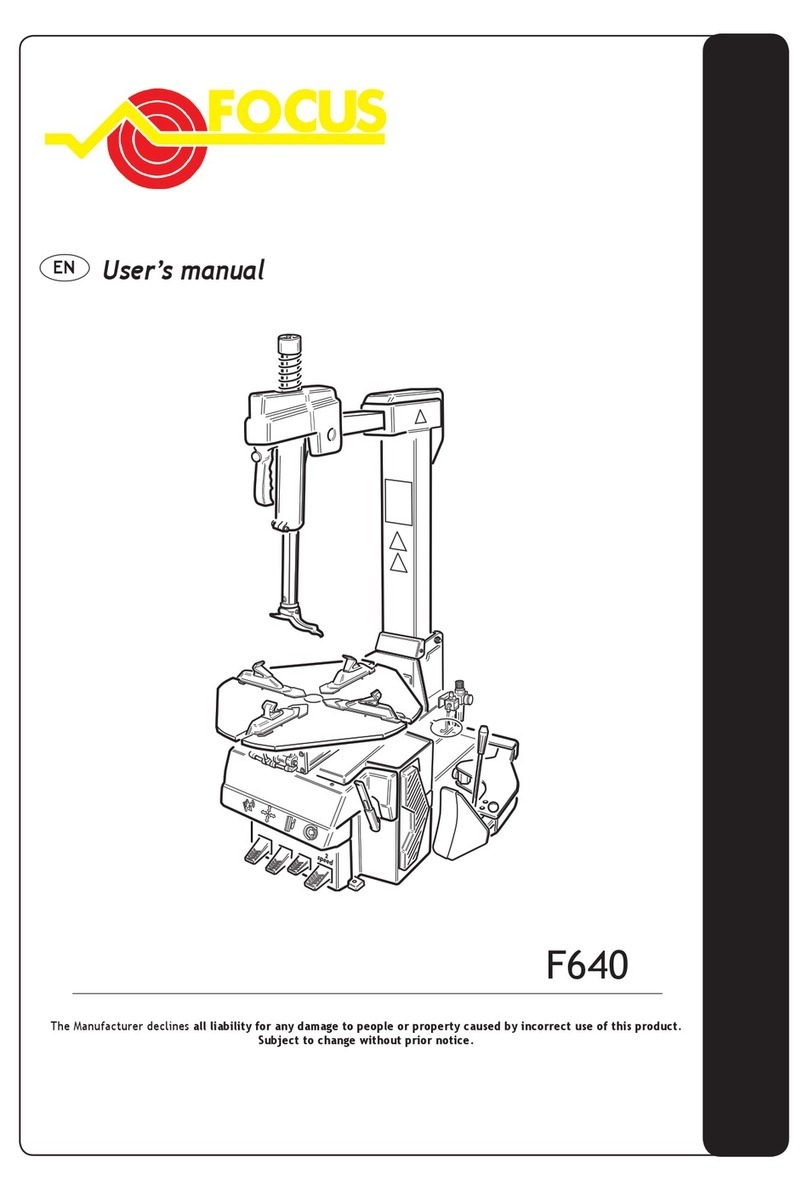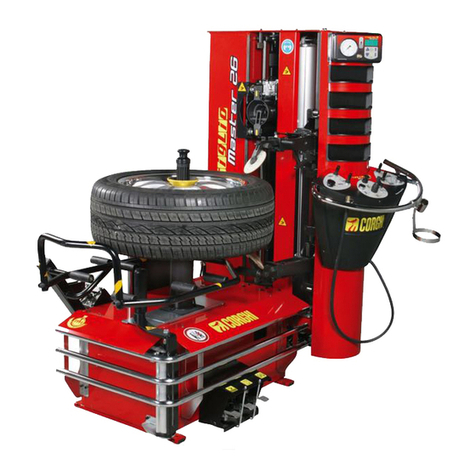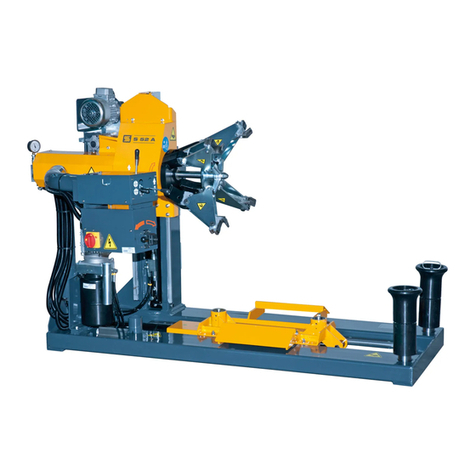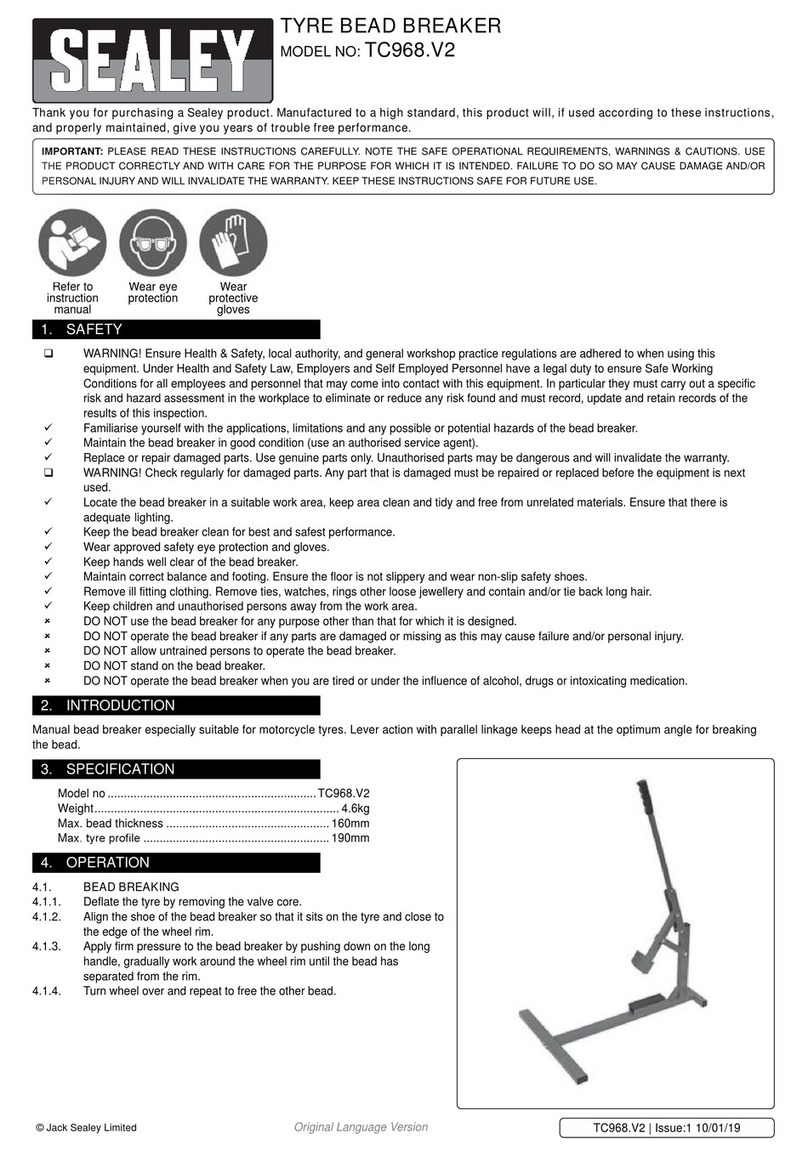
REV. 01 2014 5 / 41
CHAPTER 2 – GENERAL INFORMATION
2.1 INTENDED USE
This tire changer has been designed and manufactured exclusively to be put on a can for
removing and mounting truck, bus and commercial van tires from/onto rim bores from 8" to
23" and a tire at maximum diameter of 55".
In particular the manufacturer cannot be held responsible for any damage caused through the
use of this tire changer for purposes other than those specified in this manual, and therefore
inappropriate, incorrect and unreasonable.
2.2 GENERAL SAFETY PRECAUTIONS
The machine should only be used by duly authorized and trained personnel.
The machine should not be used for purposes other than those described in the instruction
manual.
Under no way should the machine be modified except for those modifications made explicitly
by the manufacturer.
Never remove the safety devices. Any work on the machine should only be carried out by
specialist personnel.
Any tampering or modification to the equipment carried out without the manufacturer’s prior
authorization will free him from all responsibility for damage caused directly or indirectly by
the above actions.
Removing or tampering with safety devices immediately invalidates the guarantee.
The tire changer comes complete with instruction and warning transfers which are designed
to be long-lasting. If they should for any reason be damaged or destroyed, please ask
immediately for replacements from the manufacturer.
The machine operator should avoid wearing clothes with flapping edges. Make sure that
unauthorized personnel do not approach the machine during the work cycle.
2.3 SAFETY DEVICES
The tire changer has a number of safety devices designed to
guarantee the upmost safety:
Check valve on the spindle opening hydraulic line
(inside the swivel connector, see fig. B/1). This
prevents the wheel from falling from the spindle if the
hydraulic line is accidentally broken.
Pressure relief valve set at 130 bar ± 10% (see fig.
B/2). This limits the pressure in the hydraulic line and
ensures correct operation of the plant.
Pump motor overload cut-off (inside the electric
enclosure). This cut prevents the motor from burning
out if it overheats.
Check valve on the chuck arm lifting hydraulic line.
It prevents the chuck arm from descending when any
accidental break occurs in the hydraulic line. .
